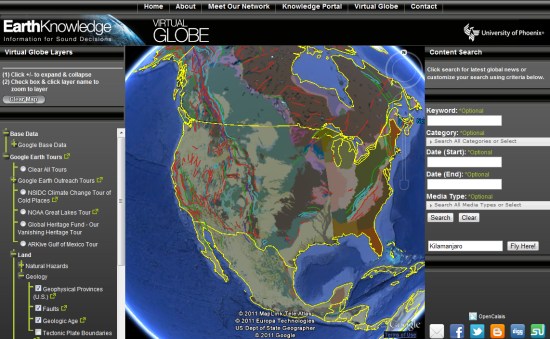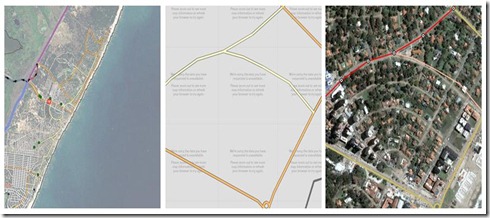Earth Knowledge, a well-known information technology firm, has recently released their “Earth Knowledge Portal“, an impressive collection of data that is tied together using the Google Earth Plug-in. The best way to explain what it does is to show you their intro video:
While the site has a variety of different features, the best one is likely their virtual globe![]() . From there, you can view a massive variety of information, including Google Earth Tours, recent earthquakes, geological information, aquifers and rivers, and much more. It’s quite an impressive tool.
. From there, you can view a massive variety of information, including Google Earth Tours, recent earthquakes, geological information, aquifers and rivers, and much more. It’s quite an impressive tool.

The column to the left side of the earth gives you options to show data overlay/tours, while the column on the right side of the globe includes a powerful search engine, along with a quick “fly here” box to jump to any location on the globe.
Many of the tours were contributed by the Google Earth Outreach Team, and data has also come from sources including BBC Earth, World Wildlife Fund, Reuters, NASA, NOAA, Christian Science Monitor, and the Global Heritage Fund.
Congrats to Earth Knowledge for putting together such a powerful product. Go try out their virtual globe![]() for yourself and tell us what you think of it.
for yourself and tell us what you think of it.
